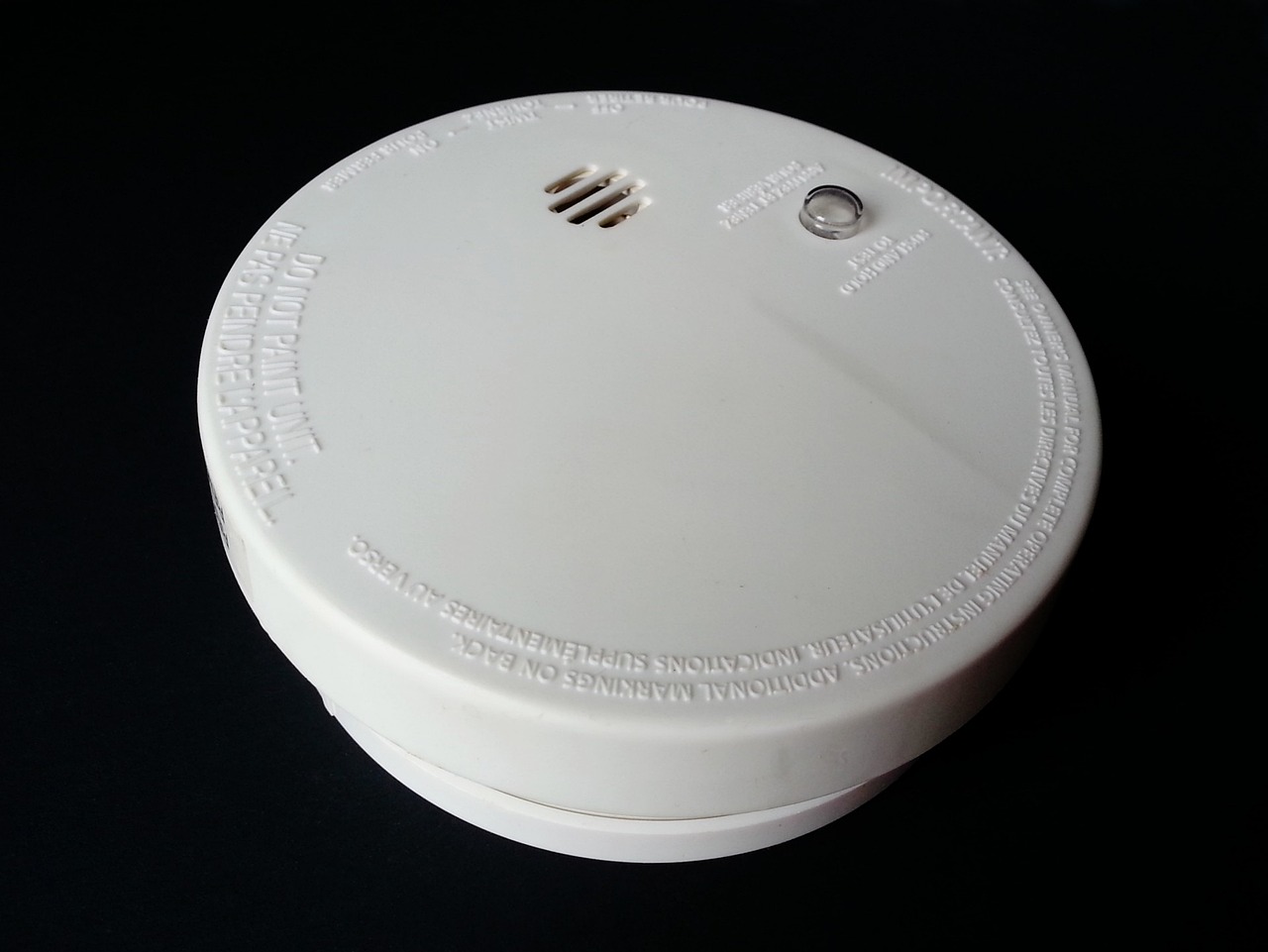Where To Put Heat Alarm In Kitchen

When it comes to kitchen safety, having the right placement for your heat alarm is crucial.
In this post, we will provide you with essential information on where to position your heat alarm to ensure optimal safety and early detection of potential fire hazards.
The kitchen is a high-risk area due to the presence of cooking appliances and heat sources.
A properly placed heat alarm can provide an early warning in case of overheating or a fire outbreak, allowing you to take immediate action and protect your loved ones and property.
In this guide, we will discuss the recommended placement for heat alarms in the kitchen, taking into consideration factors such as ceiling placement, central location, avoiding obstructions, and staying clear of heat and steam sources.
We will also touch upon the benefits of interconnected alarm systems for enhanced safety throughout your home.
By understanding the best positioning for your heat alarm in the kitchen, you can ensure that it functions optimally and provides the earliest possible warning in the event of a fire emergency.
Your safety is our priority, so let's explore the key guidelines and recommendations to help you make informed decisions when it comes to placing heat alarms in your kitchen.
Where Is The Best Place To Put a Heat Alarm In a Kitchen?
The crucial considerations when installing a heat alarm in a kitchen include positioning it centrally on the ceiling, at least 30 cm away from walls or corners for optimal heat detection.
Ensure no objects obstruct the device, and it's not too close to direct heat or steam sources to avoid false alarms.
If your home has interconnected alarms, consider linking the kitchen heat alarm to this system for comprehensive fire detection and safety.
Here are some step-by-step guidelines on where to place a heat alarm in the kitchen:
- Ceiling Placement: The heat alarm should be mounted on the ceiling to detect any rise in temperature effectively. It should be positioned at least 30 centimetres (12 inches) away from any walls or corners.
- Central Location: Place the heat alarm in a central location within the kitchen to ensure that it can detect heat evenly throughout the space. This allows for early detection and timely warning in case of a fire.
- Avoid Obstructions: Ensure that the heat alarm is not obstructed by any objects such as cabinets, shelves, or light fixtures. Clear the area around the alarm to allow for unobstructed airflow and optimal performance.
- Avoid Steam and Heat Sources: Keep the heat alarm away from direct sources of heat and steam, such as cooking appliances, kettles, or the oven. Placing the alarm too close to these sources may trigger false alarms.
- Consider Interconnected Alarms: If you have interconnected smoke alarms or heat alarms in your home, it's recommended to connect the kitchen heat alarm to the rest of the system. This way, if one alarm detects a fire or high temperature, all alarms in the house will sound, providing early warning and improved safety.
Remember to regularly test the heat alarm and replace the batteries as needed.
It is also advisable to follow the manufacturer's instructions for proper installation and maintenance.
By placing a heat alarm in the appropriate location in your kitchen, you can enhance the safety of your home and ensure early detection of any potential fire hazards.
What is the Difference Between a Heat Alarm and a Smoke Alarm?
A heat alarm and a smoke alarm are both crucial components of a home's fire safety system, but they serve different purposes. Here's the difference between the two:
- Heat Alarm: A heat alarm is designed to detect a significant rise in temperature. It activates when the temperature reaches a predetermined threshold, typically around 54 degrees Celsius (130 degrees Fahrenheit) or higher.
Heat alarms are particularly useful in areas where smoke or fumes from cooking or other sources may trigger false alarms in a smoke alarm. They are commonly installed in kitchens, garages, and utility rooms.
- Smoke Alarm: A smoke alarm, as the name suggests, is designed to detect the presence of smoke in the air. It utilises a photoelectric or ionisation sensor to detect smoke particles and triggers an alarm when smoke is detected.
Smoke alarms are essential in areas where early detection of a smouldering fire or the presence of smoke is critical, such as bedrooms, living rooms, and hallways.
The primary difference between the two is the method of detection.
While a heat alarm monitors the temperature, a smoke alarm focuses on detecting smoke particles in the air. Each type of alarm is designed to provide an early warning for different types of fire situations.
It's important to note that for comprehensive fire safety, it is recommended to have both smoke alarms and heat alarms installed in your home.
They work together to provide maximum protection against different fire hazards. In interconnected systems, if one alarm is triggered, it will activate all the alarms in the network, ensuring that everyone in the home is alerted to the potential danger.
When it comes to choosing the right alarms for your home, consult local fire safety regulations and guidelines.
Look for alarms that meet British Standards (BS) and carry the British Standard Kitemark or CE marking.
Regularly test and maintain your alarms to ensure they are in proper working condition.
By understanding the difference between heat alarms and smoke alarms, and having both installed strategically throughout your home, you can significantly enhance your fire safety measures and protect yourself, your family, and your property.
Why is it Important to Have a Heat Alarm in Your Kitchen?
Having a heat alarm in your kitchen is important for several reasons:
- Early Detection of Overheating: The kitchen is a high-risk area where cooking appliances generate heat and can potentially cause fires. A heat alarm is specifically designed to detect a significant rise in temperature, typically triggered when it reaches a predetermined threshold. By installing a heat alarm, you can receive early warning of overheating situations, allowing you to take prompt action to prevent a fire from spreading or escalating.
- Reduced False Alarms: Kitchens can be prone to smoke or steam from cooking activities, which may trigger false alarms in a traditional smoke alarm. Heat alarms, on the other hand, are not sensitive to smoke or small particles, reducing the likelihood of false alarms. This ensures that the alarm will only sound when there is a genuine temperature increase, providing a more reliable indication of a potential fire hazard.
- Safety in High-Risk Areas: The kitchen is considered a high-risk area due to the presence of heat sources, flammable materials, and the potential for cooking-related fires. Having a heat alarm installed in the kitchen helps to enhance safety measures and ensures that you are alerted at the earliest stages of a fire, giving you valuable time to respond, evacuate if necessary, and contact emergency services.
- Complements Smoke Alarms: While smoke alarms are essential for detecting smouldering fires and the presence of smoke, they may not be suitable for use in kitchens due to false alarms from cooking activities. By having a heat alarm in the kitchen, you can complement the protection provided by smoke alarms in other areas of your home, ensuring comprehensive fire detection coverage.
Remember to regularly test your heat alarm to ensure it is functioning correctly and replace the batteries as needed.
Follow the manufacturer's guidelines for installation, maintenance, and recommended lifespan of the alarm.
By installing a heat alarm in your kitchen, you are adding an extra layer of fire safety protection to this high-risk area.
It provides early detection of temperature increases, reduces false alarms, and enhances overall safety, giving you peace of mind while cooking and improving the safety of your household.
How to Install a Heat Alarm in Your Kitchen
Installing a heat alarm in your kitchen is an important step to enhance fire safety.
Here's a step-by-step guide on how to install a heat alarm in your kitchen:
- Choose the Right Location: Select a suitable location for the heat alarm in your kitchen. It should be placed on the ceiling, at least 30 centimetres (12 inches) away from any walls or corners. This positioning ensures that the alarm can detect temperature changes effectively throughout the space.
- Prepare the Area: Before installation, ensure the area is clean and free from dust or debris that could affect the adhesive or mounting. Use a damp cloth or appropriate cleaning solution to wipe the ceiling where the alarm will be installed.
- Mounting Options: Depending on the heat alarm model, you may have different mounting options. Some alarms come with a mounting plate that needs to be attached to the ceiling using screws provided. Alternatively, some alarms have adhesive backings that can be directly affixed to the ceiling. Follow the manufacturer's instructions regarding the specific mounting method for your heat alarm.
- Wiring (if applicable): If your heat alarm requires wiring, it's essential to follow safety precautions. Turn off the power to the area where you will be working. Consult a qualified electrician if you are unsure about electrical work. Connect the wires according to the manufacturer's instructions, ensuring proper grounding and insulation.
- Secure the Alarm: Once the mounting plate or adhesive is in place, attach the heat alarm to the designated spot. If using a mounting plate, align the alarm with the plate and twist it into position until secure. If using adhesive, firmly press the alarm onto the clean and dry ceiling, applying gentle pressure for a few seconds to ensure proper adhesion.
- Test the Alarm: After installation, test the heat alarm to ensure it is functioning correctly. Follow the manufacturer's instructions for testing procedures. Typically, you can press the test button to activate the alarm and verify that the sound is loud and distinct. If the alarm does not sound, check the batteries or wiring connection.
- Enable Battery Power: If the heat alarm is battery-operated, insert the recommended batteries according to the manufacturer's instructions. Ensure the batteries are fresh and regularly replace them to maintain the alarm's functionality.
- Maintenance and Testing: Regularly clean the heat alarm to remove dust or debris that may accumulate over time. Test the alarm monthly to ensure it is operational and replace the batteries as needed. Follow the manufacturer's guidelines for maintenance and recommended lifespan of the alarm.
Remember, these are general guidelines, and it's crucial to follow the specific instructions provided by the manufacturer of your heat alarm.
If you are unsure or uncomfortable with the installation process, it is advisable to consult a qualified electrician or fire safety professional to ensure a safe and proper installation.
By following these steps and ensuring the correct installation of a heat alarm in your kitchen, you are taking an important step towards improving fire safety and early detection of potential hazards.
Should You Put a Smoke Alarm in a Kitchen?
It is generally not recommended to place a smoke alarm in the kitchen due to the potential for false alarms caused by cooking activities, steam, or smoke from regular cooking.
Smoke alarms are highly sensitive and designed to detect smoke particles in the air, which can lead to frequent false alarms in a kitchen setting.
Instead, it is advisable to install a heat alarm specifically designed for kitchen use.
Heat alarms are more suitable for kitchens because they are triggered by a significant rise in temperature, typically around 54 degrees Celsius (130 degrees Fahrenheit) or higher.
They are less likely to be affected by normal cooking activities and can provide early warning in case of a fire outbreak in the kitchen.
However, it is important to note that every home is unique, and local regulations may have specific requirements regarding the placement of smoke alarms and heat alarms.
It's essential to consult your local fire safety guidelines or consult with a fire safety professional to determine the appropriate alarm placement for your specific situation.
In summary, while a smoke alarm is crucial for other areas of your home, it is not recommended to place one in the kitchen due to potential false alarms.
Instead, opt for a heat alarm specifically designed for kitchen use to ensure optimal fire safety in this high-risk area.
Final Notes On Where To Put Heat Alarm In Kitchen
Placing a smoke alarm in the kitchen isn't advised due to the likelihood of false alarms triggered by cooking, steam, or smoke.
Instead, a heat alarm, which is designed for kitchens and activates when there's a significant rise in temperature, is a more suitable choice.
This type of alarm is less prone to false alarms and provides an early warning in the event of a fire.
Ensure you consult local fire safety guidelines or seek professional advice to comply with specific alarm placement rules in your region.
By selecting the correct alarm for your kitchen and adhering to safety protocols, you can enhance your home's fire safety while reducing the chance of false alarms.
Always remember that each home is different and local regulations might have particular demands, so please always consult with relevant professionals or authorities for advice.


